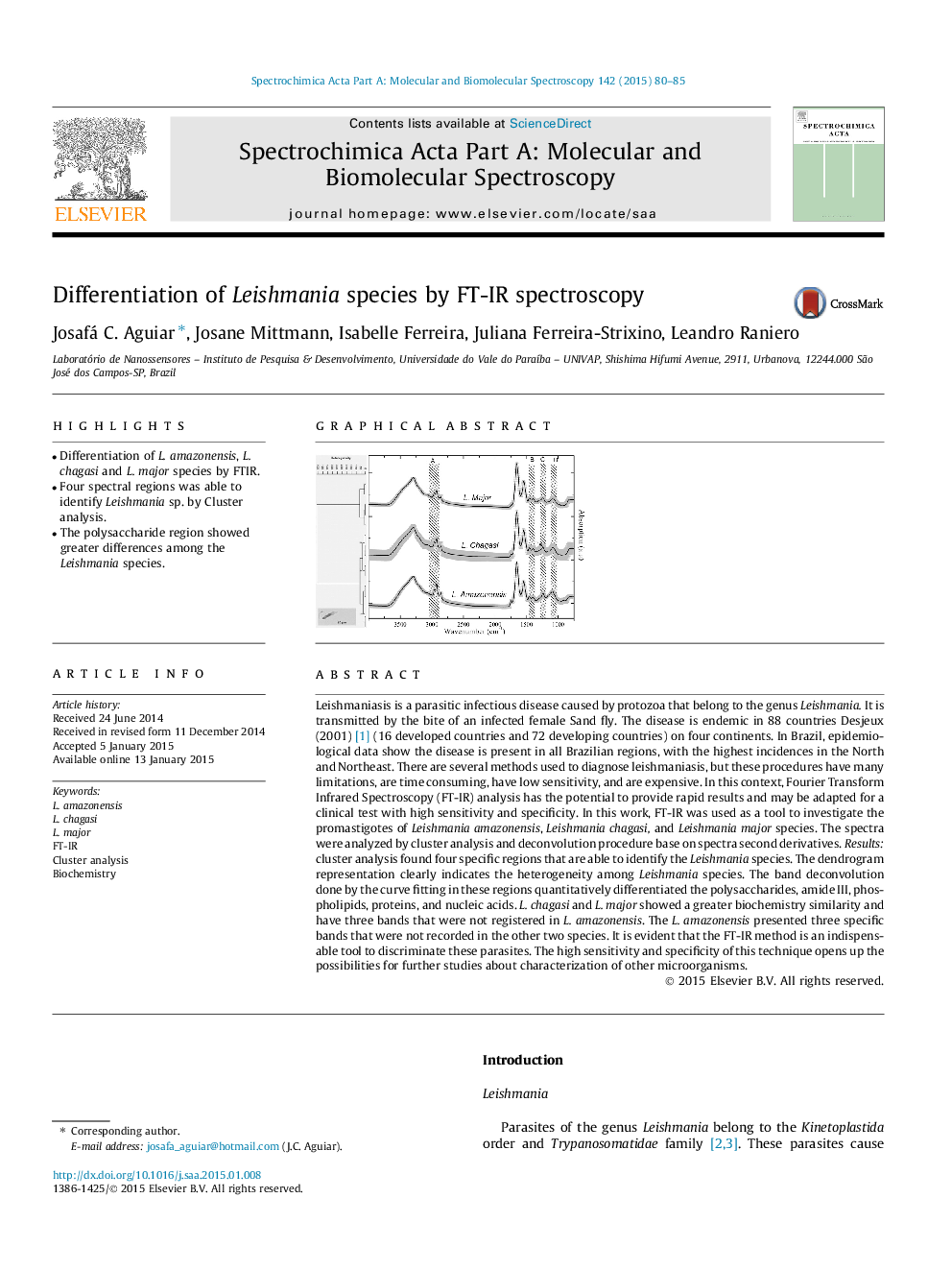| Article ID | Journal | Published Year | Pages | File Type |
|---|---|---|---|---|
| 1229159 | Spectrochimica Acta Part A: Molecular and Biomolecular Spectroscopy | 2015 | 6 Pages |
•Differentiation of L. amazonensis, L. chagasi and L. major species by FTIR.•Four spectral regions was able to identify Leishmania sp. by Cluster analysis.•The polysaccharide region showed greater differences among the Leishmania species.
Leishmaniasis is a parasitic infectious disease caused by protozoa that belong to the genus Leishmania. It is transmitted by the bite of an infected female Sand fly. The disease is endemic in 88 countries Desjeux (2001) [1] (16 developed countries and 72 developing countries) on four continents. In Brazil, epidemiological data show the disease is present in all Brazilian regions, with the highest incidences in the North and Northeast. There are several methods used to diagnose leishmaniasis, but these procedures have many limitations, are time consuming, have low sensitivity, and are expensive. In this context, Fourier Transform Infrared Spectroscopy (FT-IR) analysis has the potential to provide rapid results and may be adapted for a clinical test with high sensitivity and specificity. In this work, FT-IR was used as a tool to investigate the promastigotes of Leishmaniaamazonensis, Leishmaniachagasi, and Leishmaniamajor species. The spectra were analyzed by cluster analysis and deconvolution procedure base on spectra second derivatives. Results: cluster analysis found four specific regions that are able to identify the Leishmania species. The dendrogram representation clearly indicates the heterogeneity among Leishmania species. The band deconvolution done by the curve fitting in these regions quantitatively differentiated the polysaccharides, amide III, phospholipids, proteins, and nucleic acids. L. chagasi and L. major showed a greater biochemistry similarity and have three bands that were not registered in L. amazonensis. The L. amazonensis presented three specific bands that were not recorded in the other two species. It is evident that the FT-IR method is an indispensable tool to discriminate these parasites. The high sensitivity and specificity of this technique opens up the possibilities for further studies about characterization of other microorganisms.
Graphical abstractFigure optionsDownload full-size imageDownload as PowerPoint slide
